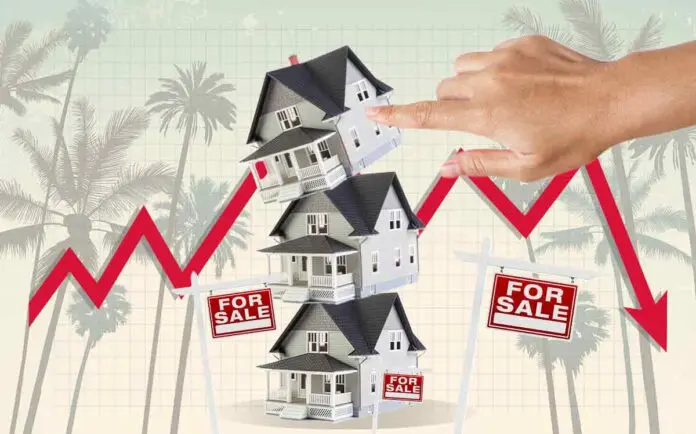At the time of this post, the average 30-year fixed-mortgage rate is 6.78 percent and the inflation rate is an insane 8.2 percent, brought on by absurd money printing by the Fed in 2021. Truly, the only positive economic indicator is the unemployment rate, which luckily has remained low and stable.
But as of October, 2022, homes are now selling at the slowest pace in the last 11 years, according to the National Association of Realtors. And this does not appear to be transitory. In fact, existing home sales have fallen for nine straight months.
Slowing home sales plus rising inventory and high interest rates create a confluence of factors that will lead to price deceleration in 2023. Here's how:
1) Rising housing supply will stymie price appreciation
First of all, it's important to note that housing inventory (aka the number of homes being listed for sale) has been historically low the since early 2020. However, housing supply has finally begun to increase nationally as of Q3 2022. This is very, very important to monitor.
Why is rising inventory a signal to watch?
In general, low inventory has a direct correlation with home value increases. In other words, competition for properties tends to increase when inventory and options are limited. Therefore, low inventory and high competitions forces upward pressure on home values - leading to price appreciation, which has occured in a dramatic fashion in 2020 and 2021.
After declining gradually in 2020, inventory dropped precipitously in 2022 to all-time lows. This led to bidding wars, multiple offer scenarios and homebuyers regularly paying up to 10% over asking price. Simply put, there were more homebuyer than homes. In economics, this is called a supply side constraint.
The phenomenon that's evolving in 2023 is a reversal of the trend we saw in 2020-2022. In other words, inventory is expected to rise in 2023 - which leads to downforce forces on home values.
2) Recessionary conditions will persist
The Fed and many economist claim that the US is not in a recession as of December 2022. However, if you ask most ordinary consumers, they'll say that it "feels like" we are in a recession, despite the definition used by the US government.
When the broader economy is in a recession and is experiencing negative GDP growth, it is very difficult to avoid home price deceleration.
3) 2022 home prices do not represent true fair market value
Since 2020, it’s been a seller’s market. Homebuyers wanting to capitalize on the historically low interest rates were jumping at the chance to pay 5, 10, even 20 percent over asking price for a property.
This "irrational exuberance" led to artificially high home prices.
4) Mortgage rates will remain stubbornly high until late 2023
Interest rates are tightly correlate to Fed policy and also economic conditions, such as the CPI - consumer pricing index.
Our prediction is that the Fed continues to slowly ratchet up rates in the near term, through Q1 2023. This will keep mortgage rates in the 6.0 - 7.0% range for at least the next 2-3 quarters. High rates will keep a large percent of buyers on the sidelines and lock them out of the housing market - from an affordability perspective.
Conclusion
"Date the rate, marry the house."
Despite the strong possibility of housing values declining, 2023 could still represent a good time to buy a property. Mainly because there will be substantially better options in terms of inventory when compared to the last 2 years.
As they say in the real estate business, "date the rate, marry the house." In other words, you may have to accept a high mortgage rate for a few months, or even a year - but you it may be worth it if you have a chance to buy the home of your dreams. You can always refinance in 2024!

